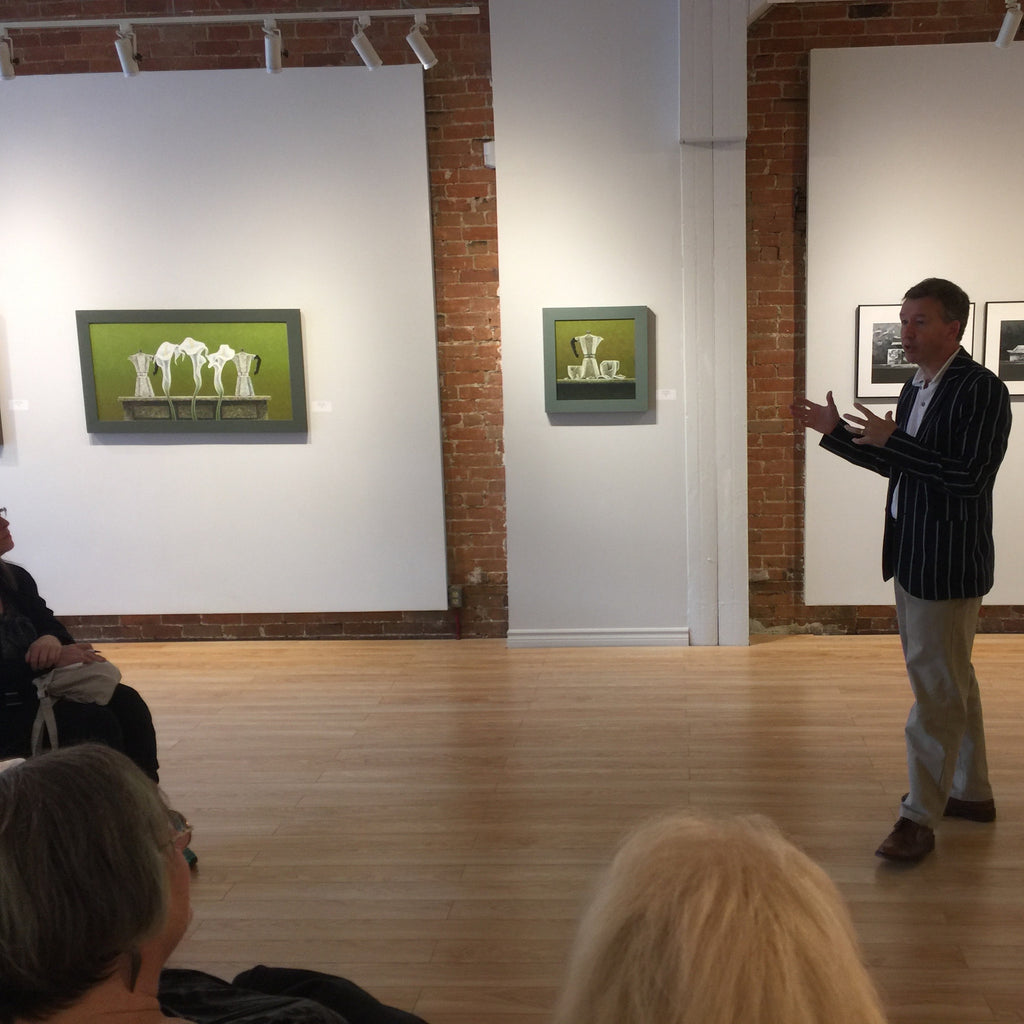Incase you missed the Artist Talk with William Forrestal last month, we asked him a couple of followup questions by email to share with you. Here are his answers.
Q) Why did you choose surrealism as your primary focus.
A) Great question, actually my painting did not start out intending to be surreal, but as realism in the subjective way artists interpret the world around them. I grew up in the Maritimes and with an appreciation of the realists of the region, Alex Colville and Christopher Pratt being good examples of artists that create a surreal interpretation of the world around them. Right now I am in a group exhibition at the Beaverbrook Art Gallery in Fredericton, ” Get Real Art of Atlantic Canada” and my painting is hanging next to a Christopher Pratt, next to an Alex Coville, any way, the example is an interesting way to illustrate how realists actually create their own version of reality.
Q) Who or what do you draw your inspiration from?
A) The inspiration for still life actually came from the work of Walter Murch, a great artist originally from Toronto, and worked mostly out of New York. Others include William Bailey and Giorgio Morandi arguable the greatest painter of the 20th century, all of whom focused on still life painting.
Why did you choose egg tempera as your medium these works of art?
It is a natural extension of my life. I have tried them all as they say, oil, watercolor, acrylic, and so on, but egg tempera has an ancient feel, naturalness to its presence that is subtle but pervasive, and one that seems so naturally aligned with the subject matter that I am exploring. It seemed both natural and affirming to use egg tempera in the context of my painting style.
Q) You said you teach your class to hold and feel the yoke of the egg when making their paints… can you explain why?
A) Egg tempera has a range of delicate subtleties and strengths , actually holding in ones hand the egg yoke in its natural state conveys this synthesis of strength and fragility as no lecture can.
Q) How do you accomplish such depth in the backgrounds of your paintings?
A) Using some of the subtleties of the egg tempera paint I use a series of thin and heavy layers of paint to create a fog of colours that often have a dominant hue.

